RBS 2009 Annual Report Download - page 132
Download and view the complete annual report
Please find page 132 of the 2009 RBS annual report below. You can navigate through the pages in the report by either clicking on the pages listed below, or by using the keyword search tool below to find specific information within the annual report.-
 1
1 -
 2
2 -
 3
3 -
 4
4 -
 5
5 -
 6
6 -
 7
7 -
 8
8 -
 9
9 -
 10
10 -
 11
11 -
 12
12 -
 13
13 -
 14
14 -
 15
15 -
 16
16 -
 17
17 -
 18
18 -
 19
19 -
 20
20 -
 21
21 -
 22
22 -
 23
23 -
 24
24 -
 25
25 -
 26
26 -
 27
27 -
 28
28 -
 29
29 -
 30
30 -
 31
31 -
 32
32 -
 33
33 -
 34
34 -
 35
35 -
 36
36 -
 37
37 -
 38
38 -
 39
39 -
 40
40 -
 41
41 -
 42
42 -
 43
43 -
 44
44 -
 45
45 -
 46
46 -
 47
47 -
 48
48 -
 49
49 -
 50
50 -
 51
51 -
 52
52 -
 53
53 -
 54
54 -
 55
55 -
 56
56 -
 57
57 -
 58
58 -
 59
59 -
 60
60 -
 61
61 -
 62
62 -
 63
63 -
 64
64 -
 65
65 -
 66
66 -
 67
67 -
 68
68 -
 69
69 -
 70
70 -
 71
71 -
 72
72 -
 73
73 -
 74
74 -
 75
75 -
 76
76 -
 77
77 -
 78
78 -
 79
79 -
 80
80 -
 81
81 -
 82
82 -
 83
83 -
 84
84 -
 85
85 -
 86
86 -
 87
87 -
 88
88 -
 89
89 -
 90
90 -
 91
91 -
 92
92 -
 93
93 -
 94
94 -
 95
95 -
 96
96 -
 97
97 -
 98
98 -
 99
99 -
 100
100 -
 101
101 -
 102
102 -
 103
103 -
 104
104 -
 105
105 -
 106
106 -
 107
107 -
 108
108 -
 109
109 -
 110
110 -
 111
111 -
 112
112 -
 113
113 -
 114
114 -
 115
115 -
 116
116 -
 117
117 -
 118
118 -
 119
119 -
 120
120 -
 121
121 -
 122
122 -
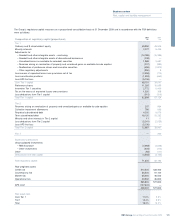 123
123 -
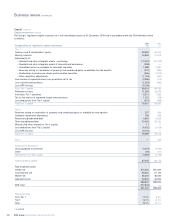 124
124 -
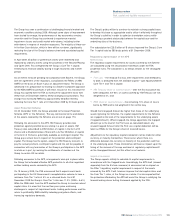 125
125 -
 126
126 -
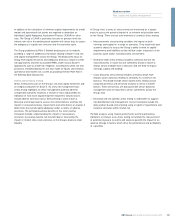 127
127 -
 128
128 -
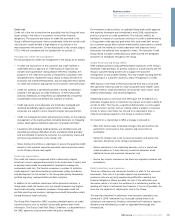 129
129 -
 130
130 -
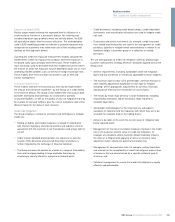 131
131 -
 132
132 -
 133
133 -
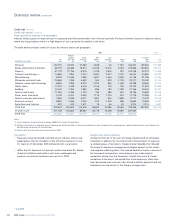 134
134 -
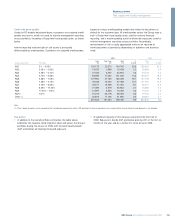 135
135 -
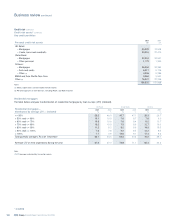 136
136 -
 137
137 -
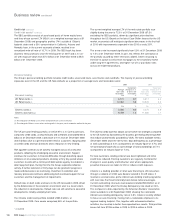 138
138 -
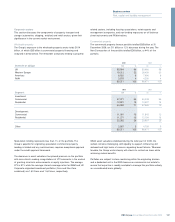 139
139 -
 140
140 -
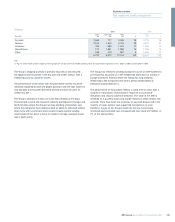 141
141 -
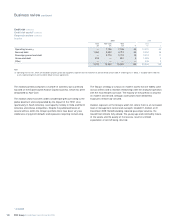 142
142 -
 143
143 -
 144
144 -
 145
145 -
 146
146 -
 147
147 -
 148
148 -
 149
149 -
 150
150 -
 151
151 -
 152
152 -
 153
153 -
 154
154 -
 155
155 -
 156
156 -
 157
157 -
 158
158 -
 159
159 -
 160
160 -
 161
161 -
 162
162 -
 163
163 -
 164
164 -
 165
165 -
 166
166 -
 167
167 -
 168
168 -
 169
169 -
 170
170 -
 171
171 -
 172
172 -
 173
173 -
 174
174 -
 175
175 -
 176
176 -
 177
177 -
 178
178 -
 179
179 -
 180
180 -
 181
181 -
 182
182 -
 183
183 -
 184
184 -
 185
185 -
 186
186 -
 187
187 -
 188
188 -
 189
189 -
 190
190 -
 191
191 -
 192
192 -
 193
193 -
 194
194 -
 195
195 -
 196
196 -
 197
197 -
 198
198 -
 199
199 -
 200
200 -
 201
201 -
 202
202 -
 203
203 -
 204
204 -
 205
205 -
 206
206 -
 207
207 -
 208
208 -
 209
209 -
 210
210 -
 211
211 -
 212
212 -
 213
213 -
 214
214 -
 215
215 -
 216
216 -
 217
217 -
 218
218 -
 219
219 -
 220
220 -
 221
221 -
 222
222 -
 223
223 -
 224
224 -
 225
225 -
 226
226 -
 227
227 -
 228
228 -
 229
229 -
 230
230 -
 231
231 -
 232
232 -
 233
233 -
 234
234 -
 235
235 -
 236
236 -
 237
237 -
 238
238 -
 239
239 -
 240
240 -
 241
241 -
 242
242 -
 243
243 -
 244
244 -
 245
245 -
 246
246 -
 247
247 -
 248
248 -
 249
249 -
 250
250 -
 251
251 -
 252
252 -
 253
253 -
 254
254 -
 255
255 -
 256
256 -
 257
257 -
 258
258 -
 259
259 -
 260
260 -
 261
261 -
 262
262 -
 263
263 -
 264
264 -
 265
265 -
 266
266 -
 267
267 -
 268
268 -
 269
269 -
 270
270 -
 271
271 -
 272
272 -
 273
273 -
 274
274 -
 275
275 -
 276
276 -
 277
277 -
 278
278 -
 279
279 -
 280
280 -
 281
281 -
 282
282 -
 283
283 -
 284
284 -
 285
285 -
 286
286 -
 287
287 -
 288
288 -
 289
289 -
 290
290 -
 291
291 -
 292
292 -
 293
293 -
 294
294 -
 295
295 -
 296
296 -
 297
297 -
 298
298 -
 299
299 -
 300
300 -
 301
301 -
 302
302 -
 303
303 -
 304
304 -
 305
305 -
 306
306 -
 307
307 -
 308
308 -
 309
309 -
 310
310 -
 311
311 -
 312
312 -
 313
313 -
 314
314 -
 315
315 -
 316
316 -
 317
317 -
 318
318 -
 319
319 -
 320
320 -
 321
321 -
 322
322 -
 323
323 -
 324
324 -
 325
325 -
 326
326 -
 327
327 -
 328
328 -
 329
329 -
 330
330 -
 331
331 -
 332
332 -
 333
333 -
 334
334 -
 335
335 -
 336
336 -
 337
337 -
 338
338 -
 339
339 -
 340
340 -
 341
341 -
 342
342 -
 343
343 -
 344
344 -
 345
345 -
 346
346 -
 347
347 -
 348
348 -
 349
349 -
 350
350 -
 351
351 -
 352
352 -
 353
353 -
 354
354 -
 355
355 -
 356
356 -
 357
357 -
 358
358 -
 359
359 -
 360
360 -
 361
361 -
 362
362 -
 363
363 -
 364
364 -
 365
365 -
 366
366 -
 367
367 -
 368
368 -
 369
369 -
 370
370 -
 371
371 -
 372
372 -
 373
373 -
 374
374 -
 375
375 -
 376
376 -
 377
377 -
 378
378 -
 379
379 -
 380
380 -
 381
381 -
 382
382 -
 383
383 -
 384
384 -
 385
385 -
 386
386 -
 387
387 -
 388
388 -
 389
389 -
 390
390
 |
 |

Business review continued
Credit risk continued
Credit risk assets*
Credit risk assets consist of loans and advances (including overdraft
facilities), instalment credit, finance lease receivables and traded
instruments across all customer types. Reverse repurchase agreements
and issuer risk (primarily debt securities – see page 151 are excluded.
Where relevant, and unless otherwise stated, data reflects the effect of
credit mitigation techniques. All the disclosures in this section (pages
130 to 141) are unaudited and are labelled with an asterisk (*).
RBS Group Annual Report and Accounts 2009130
Key points
•Total credit risk assets reduced by £146 billion, or 17% during 2009
or 13% on a constant currency basis.
•Reductions occurred across industry sectors and in most regions.
The largest reductions were in lending balances and derivatives.
•As part of the strategic review, the designation of assets between
Core and Non-Core divisions was completed during the first
half of 2009, hence the portfolio is reported according to the
divisional structure as at 31 December 2009 in the table above.
2009 2008(1)
Credit risk assets £m £m
UK Retail 103,029 97,069
UK Corporate 109,908 126,736
Wealth 15,951 17,604
Global Banking & Markets 224,355 450,321
Global Transaction Services 7,152 8,995
Ulster Bank 42,042 64,695
US Retail & Commercial 52,104 82,862
Other 2,981 6,594
Core(1) 557,522 n/a
Non-Core 151,264 n/a
708,786 854,876
Note:
(1) The 2008 analysis between Core and Non-Core is not available.
Credit concentration risk
The Group defines four key areas of concentration in credit risk that are
monitored, reported and managed at both Group and divisional levels.
These are single name, industry/sector, country and product/asset class.
Frameworks to address single name, industry/sector and country
concentrations are established and continue to be enhanced and
embedded into business processes across the Group. Aspects of the
product/asset class framework are in place whilst others will be
developed during the course of 2010.
Under the Group’s credit approval framework, the required approval
level is linked to the size of exposure with exposures above a certain
level requiring the highest level of approval, held by a very small
number of executives. In addition, the Group’s single name
concentration framework includes specific approval requirements;
additional reporting and monitoring; and the requirement to develop
plans to address and reduce excess exposures.
The Group has also developed a more robust approach and framework for
managing sector concentrations, a major outcome of which is the regular
review of the most material concentrations at the Executive Risk Forum
(ERF). These reviews include an assessment of the Group’s franchise in a
particular sector, an analysis of the outlook (including downside
outcomes), identification of key vulnerabilities and stress/scenario tests.
Reviews conclude with specific sector caps and other portfolio strategies
to align the Group’s exposure profile with its appetite.
Country risk
Country risk arises from sovereign events (for example, default or
restructuring); economic events (for example, contagion of sovereign
default to other parts of the economy, cyclical economic shock); political
events (for example, convertibility restrictions and expropriation or
nationalisation); and natural disaster or conflict. Losses are broadly
defined and include credit, market, liquidity, operational and franchise
risk related losses.
The Group’s appetite for country risk is set by the ERF in the form of
limits by country risk grade, with sub-limits on term exposure. Countries
where exposures exceed this limit framework are approved by the ERF
while authority is delegated to the Group Country Risk Committee
(GCRC) to manage exposures within the framework. Specific limits are
set for each country based on a risk assessment taking into account the
Group’s franchise and business mix in that country. Additional limitations
– on product types with higher loss potential, for example – are
established to address specific vulnerabilities in the context of a
country's outlook and/or the Group's business strategy in a particular
country. A country watch list framework is in place to proactively monitor
emerging issues and facilitate the development of mitigation strategies.
* unaudited
